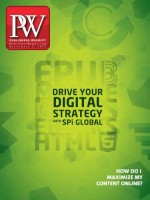If the folks at Merriam-Webster were to declare a word of the year for the book publishing industry in 2011, it would have been discoverability. The closing of Borders, the declining number of subscribers to print periodicals, and the increase in precise keyword search to find titles had everyone wondering how readers would now find all the books published.
Publicly available data suggest unneeded worry and the overuse of a horribly awkward word. The AAP/BISG BookStats report that came out in July 2012 shows readers are still buying $27 billion worth of books each year, roughly the same level as 2010. Independent bookstores, the entryway into a world beyond the bestsellers, have just as many storefronts as they did last year and the year before, according to the American Booksellers Association. And as for new tools, the social networking site Goodreads has passed 10 million members and announced that 360 million books had been catalogued on its site.
The word discoverability frames the problem incorrectly. As the data indicate, and confirmed by the piles of books on nightstands around the world, readers are not having a problem discovering books. Publishers and authors are concerned about something very different from discovery. When publishers say, “We need to improve the discoverability of books,” it sounds like there is a new problem, when there is not.
Book publishing has more new product introductions in a year than any other industry on the planet, and the challenge of creating awareness for a single title among the millions of active titles has always been difficult. All the hard work publishers do in packaging and promoting (and purchasing of endcaps) is meant to bring readers in contact with books. We all know these tools are becoming less and less effective. Maybe that’s why we are searching for a new word to describe an old problem.
This shift of attention to a more ill-defined problem keeps us from the real work of finding new solutions. In the 10 years that I have been working with publishers, I have always been amazed at the openness to new ideas for how books might be marketed and promoted, which leaves me confused as to why, in the vast majority of cases, publishers leave the most obvious and most powerful mechanism to promote books untried: talking to readers directly.
I know all about the history. I remember the complaints from booksellers when Simon & Schuster made its 40% off Groupon offer to readers during the 2009 holiday season and the questions about the valued relationship between publisher and bookseller. What that better shows is the fear everyone feels about how much the industry has changed in the past five years. Publishers can ill afford to continue to only promote via proxy, giving this precious power to outside parties.
When we talk about direct contact with readers, the discussion quickly turns to who should be having that conversation. Publishers feel very comfortable deferring to authors, who do possess privileged relationships with their readers. But readers being blind to publishers’ brands comes from too many imprints that provide no consistency of product.
We could imagine another world where publishers are a part of the direct discussion with readers. Or we could look to companies like Hay House and O’Reilly, which illustrate what brand equity looks like. It’s no surprise that these same publishers are held up as ones that have built strong connections directly with their readers.
During a panel at the IDPF conference before BEA, Random House’s Madeline McIntosh supported the old model of the publisher-agonistic reader and the desire not to compete against booksellers, but she did say, according to Publisher’s Lunch, “We do have authors who have a vital interest in maintaining information about their own customers/readers. Some of our most innovative authors in the business category are asking us to help them sell directly to consumers because they want to retain data.” To these authors, McIntosh described this lack of data as “a lost asset.”
Building direct relationships creates an asset that can be used repeatedly to make readers aware of information and entertainment they want. Harlequin, at the top of its home page, is building a “permission asset” by enabling readers to subscribe to an e-mail newsletter. Imagine a Kickstarter-like “Remind Me” button on publishers’ Web pages, so that if I am not sure about ordering a book while on their sites I might leave my e-mail and get another nudge along with a summary of the early press when the book is released. Tor.com may be the best example of a publisher initiative to build community and create an asset by both promoting its titles and titles from a wide variety of other sources including competitors.
It’s time for us to see building connections to readers as the same work we have always done.
Todd Sattersten is the founder of BizBookLab, a consultancy that helps experts develop and publish books. He is the author of Every Book Is a Startup: The New Business of Publishing (oreil.ly/everybookis); you can sign up for his biweekly newsletter at toddsattersten.com.



 Volume 259
Issue 36
09/03/2012
Volume 259
Issue 36
09/03/2012





